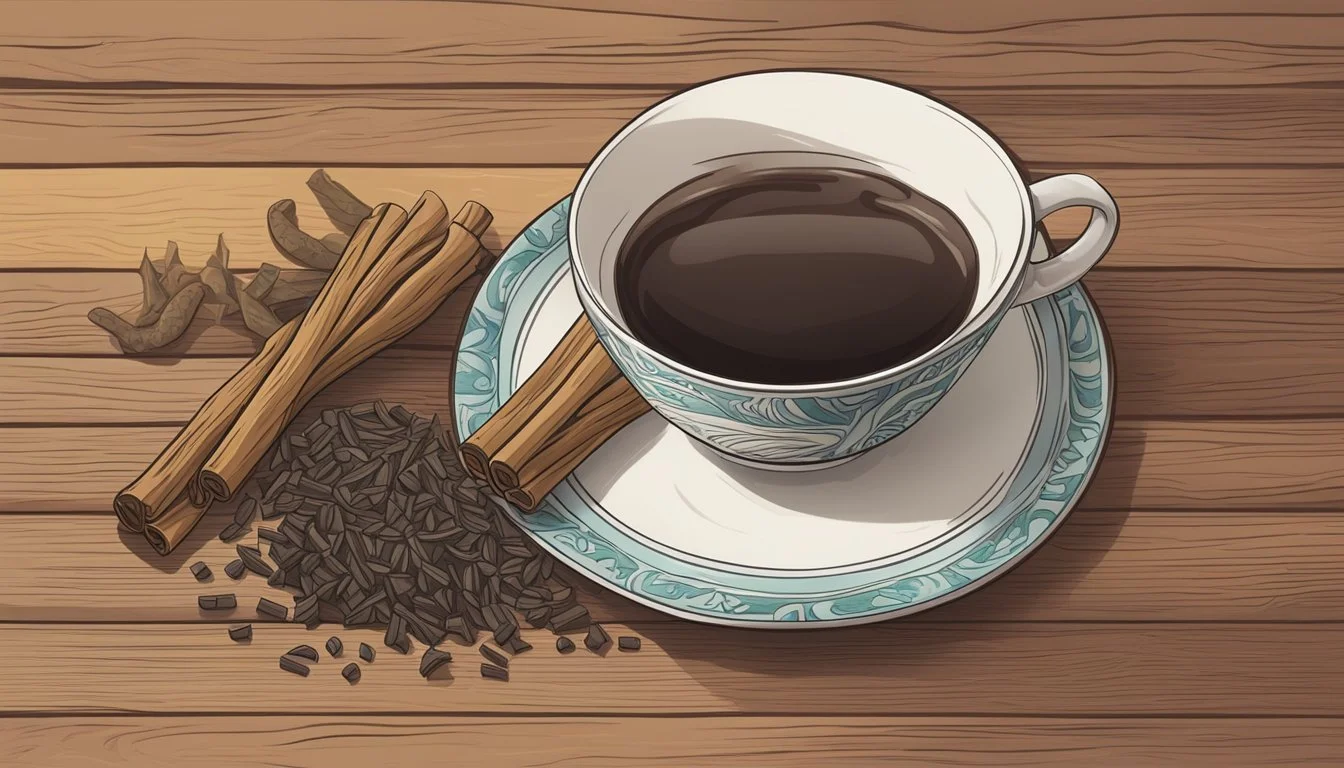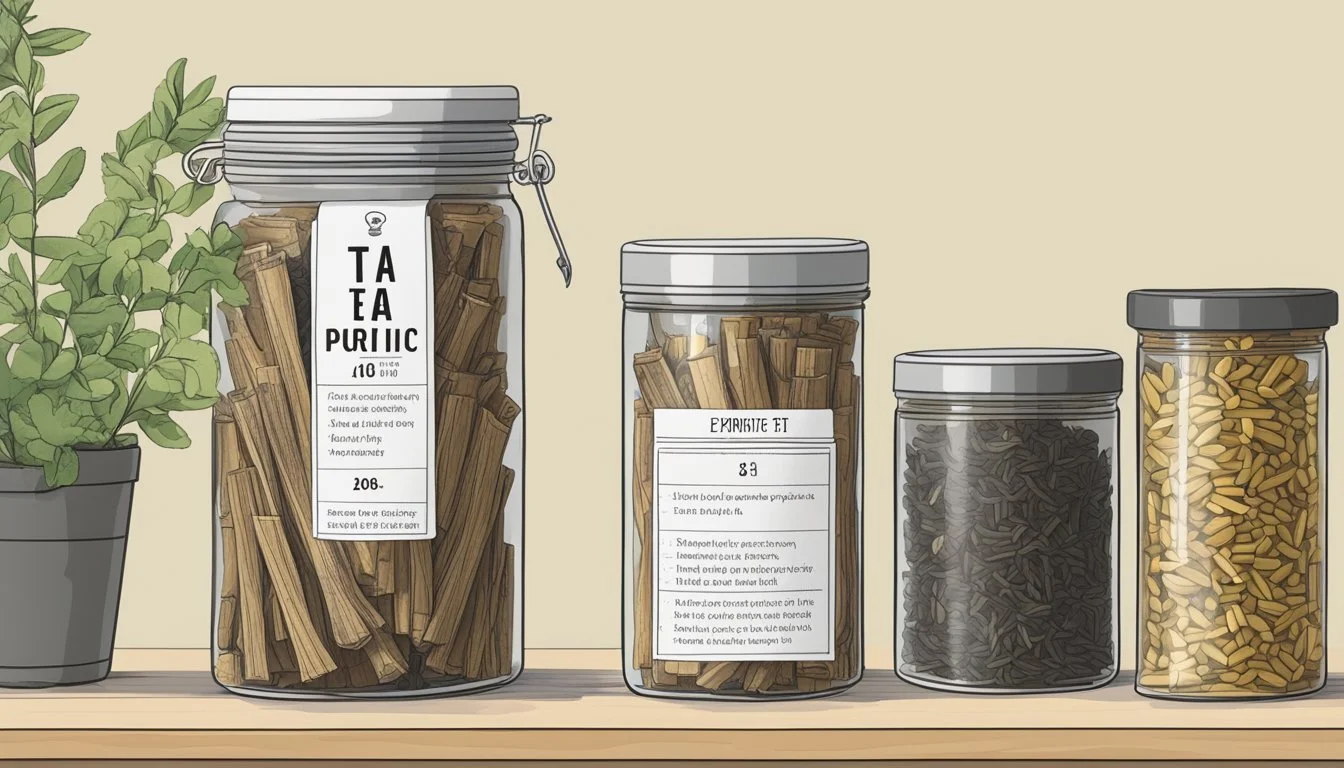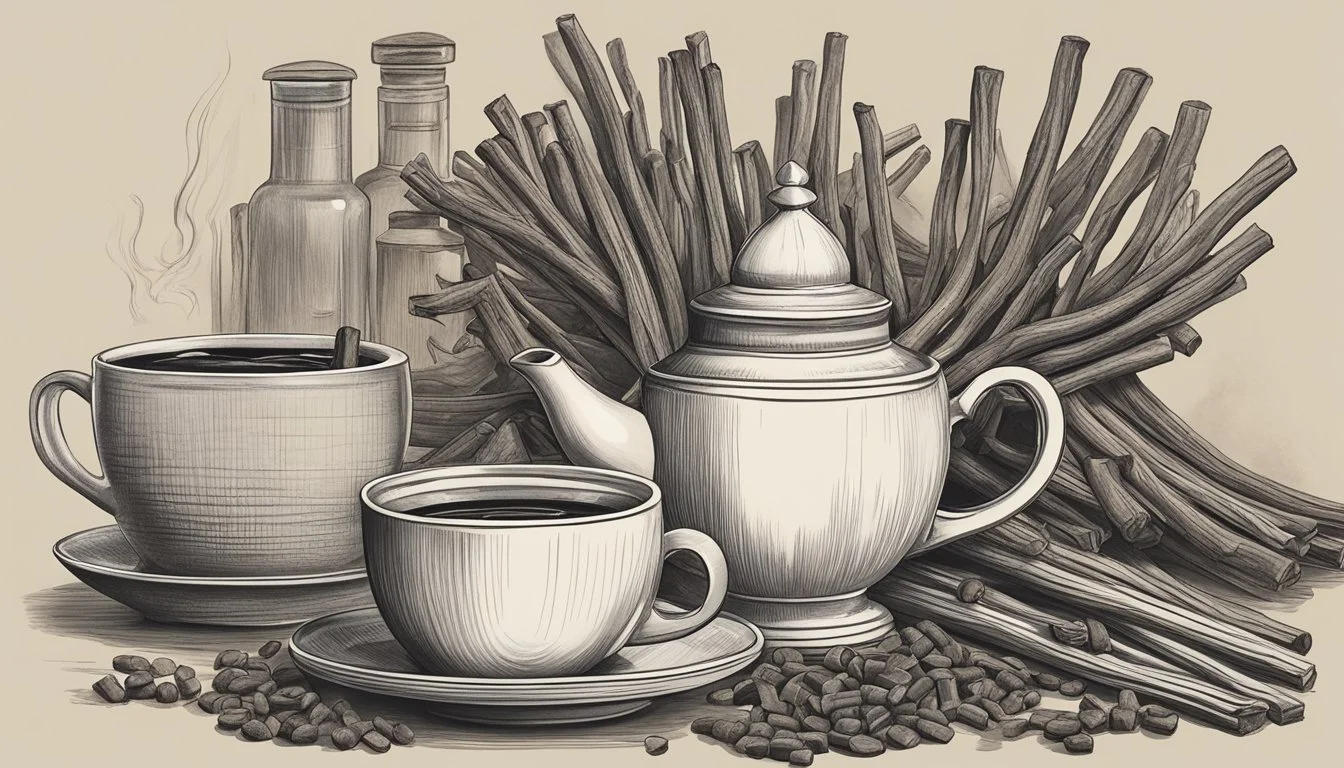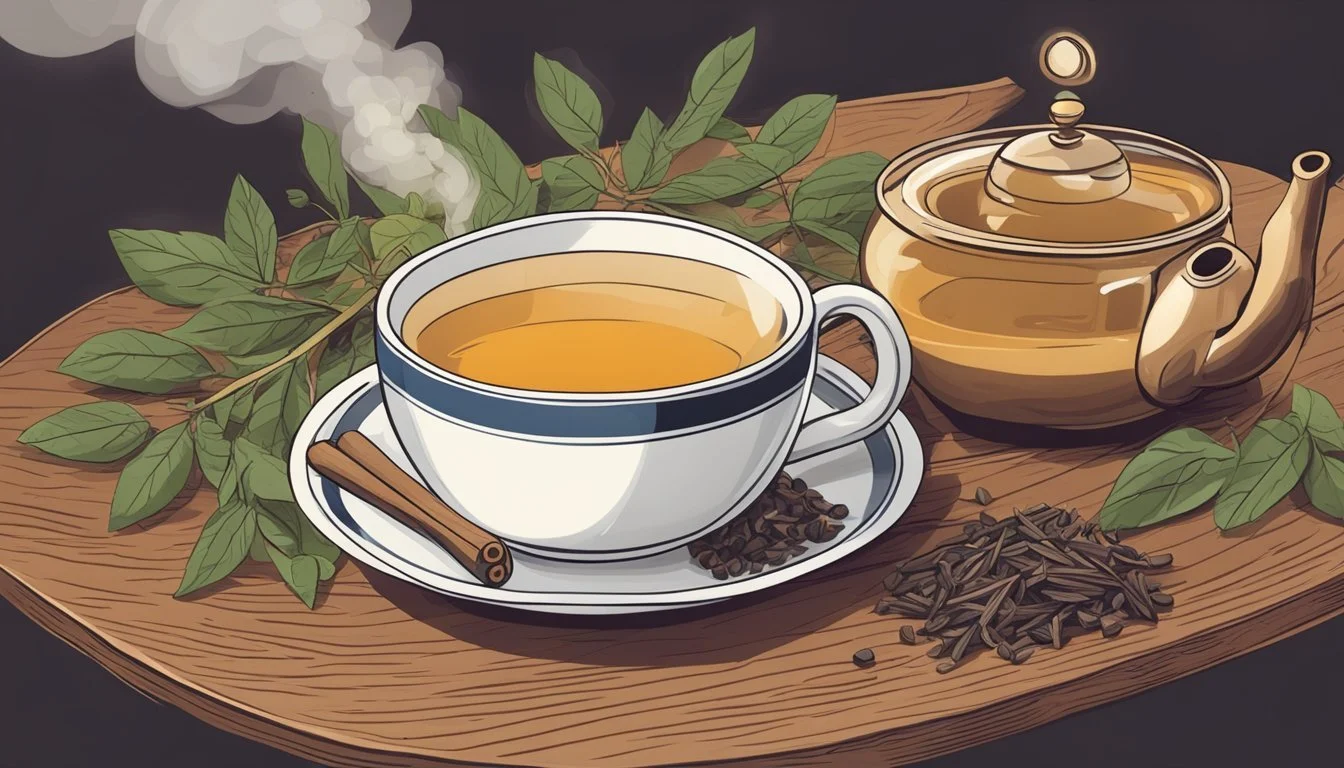How Long Does Licorice Root Tea Last?
Understanding Shelf Life and Storage Tips
Licorice root tea, a beverage steeped from the dried roots of the Glycyrrhiza glabra plant, is praised for its sweet taste and potential health benefits. This herbal tea is often used to soothe digestive issues and is known for its anti-inflammatory and antimicrobial properties. When it comes to storage, the shelf life of licorice root tea is influenced by various factors, including how it's prepared, stored, and the freshness of the licorice root.
The longevity of licorice root tea, once brewed, is similar to that of other herbal teas. If stored properly in a sealed container in the refrigerator, the tea can stay fresh and retain its quality for a couple of days. However, the potency of the tea's compounds may diminish over time, which could affect its efficacy. It is also essential to note that the proper drying and storage of the licorice root before brewing play a vital role in ensuring the tea's longevity post-brewing.
Understanding Licorice Root Tea
Licorice root tea offers distinctive flavor and a suite of traditional benefits, crafted from the root of the licorice plant, Glycyrrhiza glabra, known as sweet root.
Licorice Root Basics
Licorice root refers to the underground part of the Glycyrrhiza glabra plant, commonly referred to as sweet root or liquorice. This portion harbors the compound glycyrrhizin, responsible for the root's characteristic sweet taste, which is significantly sweeter than sucrose. The plant itself is a legume native to Western Asia and Southern Europe.
Traditional Uses of Licorice
Historically, licorice has been used for various medicinal purposes. It is known for its soothing properties on the digestive system, and some cultures have utilized it as a remedy for respiratory issues. The benefits are attributed to glycyrrhizin's anti-inflammatory and antimicrobial effects, although one should note that excessive consumption can lead to adverse effects on health.
Preparation of Licorice Root Tea
To prepare licorice root tea, dried roots of the licorice plant are steeped in hot water. The ideal brewing time can vary but typically ranges between 5 to 15 minutes, creating a beverage with a rich, naturally sweet flavor profile. The roots are often aged 3 to 4 years before use, enhancing the tea's potency.
Health Benefits and Properties
Licorice root tea is renowned for its array of health benefits, primarily due to its anti-inflammatory, antioxidant, antimicrobial, and antiviral properties. It serves as a supportive herbal remedy for various health conditions.
Anti-Inflammatory Effects
Licorice root contains compounds that have significant anti-inflammatory properties. This can help alleviate pain and swelling in conditions like arthritis. Studies suggest that glycyrrhizin, a key constituent, inhibits the production of pro-inflammatory cytokines, thus reducing inflammation.
Antimicrobial and Antiviral Activities
The antimicrobial and antiviral activities of licorice root are well-documented. Its compounds, including glycyrrhizin and flavonoids, are effective against several microbes like Staphylococcus, Streptococcus, and Candida albicans. These properties make it beneficial in treating infections and in virus suppression.
Digestive System Support
Licorice root tea aids digestive health by soothing disorders such as peptic ulcers and acid reflux. The tea enhances mucus production in the stomach lining, which acts as a protective layer and may help in healing ulcers.
Respiratory Health
Regarding respiratory health, licorice root has been used to ease the symptoms of conditions like asthma. Its expectorant properties can assist in breaking up and expelling respiratory mucus, and it has proven effective in soothing a cough and sore throat.
Potential Risks and Side Effects
Licorice root tea, while beneficial for various health issues, carries potential risks and side effects, particularly due to the presence of glycyrrhizin. It is essential to understand these risks, especially for individuals with specific health conditions or those on certain medications.
Complications with Medical Conditions
People with heart disease or kidney disease should exercise caution when consuming licorice root tea. The active compound glycyrrhizin can cause high blood pressure and low potassium levels, conditions that are particularly detrimental to these individuals. Continuous or high intake of glycyrrhizin can lead to these adverse effects, exacerbating existing health issues.
Glycyrrhizin Related Concerns
Glycyrrhizin, a primary active component of licorice root, can mimic the hormone cortisol, potentially leading to imbalances in the body. Overconsumption can result in:
A significant decrease in potassium levels, known as hypokalemia
An increase in blood pressure
These effects can occur when consuming licorice root tea in large amounts or for an extended period.
Interactions with Medications
Licorice root tea may interact adversely with various medications, necessitating caution or avoidance for some individuals:
Blood pressure medications: May have their effects amplified or reduced, causing imbalances
Diuretics: Can lead to an exacerbated drop in potassium levels
Warfarin: Licorice may decrease the effectiveness of this blood thinner
It is essential to consult with a healthcare professional before consuming licorice root tea if taking any medications to prevent potentially serious interactions.
Nutritional Profile and Active Compounds
Licorice root tea contains several potent compounds that contribute to its health benefits. The most impactful constituents are glycyrrhizic acid, flavonoids, and deglycyrrhizinated licorice (DGL).
Licorice Extract and Glycyrrhizic Acid
Licorice extract derives from the root of the licorice plant and is rich in a compound called glycyrrhizic acid. This substance is largely responsible for the root's sweet flavor and is considered to have various medicinal properties, including anti-inflammatory and antimicrobial effects.
Flavonoids Content
The root of the licorice plant is also a source of flavonoids, which are beneficial nutrients. Flavonoids in licorice include isoliquiritigenin and glabridin, which have been studied for their potential to provide antioxidant benefits and support the body's natural defenses.
Deglycyrrhizinated Licorice (DGL)
DGL is a form of licorice that has had glycyrrhizic acid removed to reduce potential side effects associated with licorice, such as increased blood pressure and water retention. DGL retains the beneficial effects of flavonoids and is often used in digestive health supplements.
Dosage and Consumption Guidelines
Consuming licorice root tea involves adhering to recommended dosages and understanding specific precautions, especially during pregnancy and breastfeeding.
Recommended Dosage of Licorice
Dosage recommendations for licorice root tea vary depending on the particular health goals or needs. Typically, the suggested dosage for adults is about 1-2 grams of powdered licorice root per day. When it comes to tea, this translates to 1 cup of licorice tea made from 1 teaspoon of licorice root, once or twice daily. Exceeding these dosages over long periods may lead to adverse effects, due to a compound in licorice called glycyrrhizin, which can cause imbalances in electrolytes if consumed in large amounts.
Precautions During Pregnancy and Breastfeeding
Women who are pregnant should steer clear of consuming licorice root in any form, as high amounts of glycyrrhizin can potentially lead to complications, such as preterm labor. The safety of licorice tea during pregnancy has not been well-established, and it's widely recommended to avoid it.
During breastfeeding, licorice root consumption should similarly be approached with caution. There is insufficient evidence regarding the safety of licorice for nursing babies, so mothers are advised to consult a healthcare provider before consuming licorice tea or adding this herb to their diet.
Shelf Life and Storage of Licorice Root Tea
The shelf life of licorice root tea depends on the storage conditions. Proper storage can significantly extend its freshness and potency.
Optimizing Shelf Life
To maximize the shelf life of licorice root tea:
Store in a cool, dry place: Heat and moisture accelerate the degradation of the tea's quality.
Use an airtight container: Oxygen exposure can stale the tea and lessen its aromatic properties.
Keep away from light: Direct sunlight can deteriorate active compounds in the tea.
By following these guidelines, one can ensure the best possible storage conditions for licorice root tea, helping to maintain its flavor and therapeutic properties for as long as possible.
Signs of Deterioration
One should be aware of changes that indicate the tea has lost its quality:
Odor: A loss or change in the tea's characteristic sweet, earthy smell.
Flavor: A noticeable decrease in potency or a taste that is off or stale.
Appearance: Any mold or unexpected changes in the appearance of the tea leaves.
If any of these signs are present, the licorice root tea may not provide the desired flavor or health benefits usually associated with the tea and should be discarded.
Additional Forms of Licorice and Uses
Aside from its popular use as a tea, licorice is also utilized in various other forms, each with specific applications.
Licorice in Traditional Chinese Medicine
In Traditional Chinese Medicine (TCM), licorice root is celebrated for its anti-inflammatory properties. Historically, licorice has been employed to address ailments such as coughs, colds, gastrointestinal issues, and certain reproductive concerns. In TCM, licorice sometimes serves as a "guide drug," enhancing the effects of other herbal components in a formulation.
Licorice Capsules and Powder
Available for more convenient consumption, licorice can be found in capsules and powder forms. Capsules provide a measured dose of licorice for digestive issues and other health concerns. As a powder, licorice can be integrated into food and drinks for its potential health benefits and its natural sweetness.
Topical Uses of Licorice
The use of licorice in topical gels or creams targets skin issues due to its anti-inflammatory and antimicrobial qualities. It is believed to help with conditions like eczema and acne. When applied topically, licorice also displays properties that may help in reducing skin redness and lighten blemishes.
Understanding the Global Impact of Licorice
Licorice has played a significant role in cultures worldwide, not only as a beloved sweet flavor in candies but also in terms of regulatory oversight due to its health effects.
Cultural Significance and History
Licorice (Glycyrrhiza glabra) has a storied history, with its presence dating back to ancient civilizations. Regarded for its distinctive sweet taste, which is primarily due to the compound glycyrrhizin, licorice has been used both as a confectionery flavoring and a medicinal herb. In fact, its sweetness is said to be several times that of sugar, which made it popular among various cultures for flavoring food and beverages.
The use of licorice extends to mimic the flavor of anise; in some licorice candies, anise oil is utilized to enhance the sweet flavor. Moreover, this plant has been a staple in traditional medicine, particularly in Chinese practices to treat a variety of ailments, showcasing its versatility beyond being a simple ingredient in candies.
Regulation and Safety Standards
Regulatory bodies, like the Food and Drug Administration (FDA), monitor the use of licorice and its derivatives in food products due to potential health effects. Licorice root contains glycyrrhizin, which can cause adverse effects if consumed in large amounts over a prolonged period. This has led to safety standards and advisories that guide consumers on the acceptable daily intake.
The FDA's concern stems from licorice's ability to affect potassium levels in the body, which can lead to hypertension and other cardiovascular-related issues. Thus, while licorice candy remains a popular treat, there is an imperative to balance its consumption within safe boundaries, informing the public about potential risks associated with its excessive intake. Regulations also require that products containing licorice are properly labeled to alert those who may need to avoid it due to health concerns.
FAQs on Licorice Root Tea
This section addresses common inquiries about the health effects of licorice root tea and details regarding its taste and preparation methods.
Common Questions About Health Effects
Licorice root tea, derived from the root of the Glycyrrhiza glabra plant, is traditionally linked to various health benefits.
Sore Throats: The tea is believed to soothe sore throats due to its anti-inflammatory properties.
Digestive Comfort: It is commonly consumed to ease indigestion and an upset stomach. Conditions such as heartburn may be alleviated by sipping licorice root tea.
Hot Flashes and Menopause: Some individuals use licorice tea to manage symptoms associated with menopause, including hot flashes.
Skin Conditions: Licorice root may support skin health, potentially benefiting conditions like eczema.
Despite its potential benefits, licorice root tea should be consumed with caution as it can have adverse effects on the liver and may interfere with certain medications. Long-term or excessive consumption can lead to complications and should be avoided, especially in individuals with hypertension, heart disease, kidney disease, or those who are pregnant.
Queries on Taste and Preparation
Licorice root tea is noted for its sweet flavor, which makes it a pleasant natural remedy without the need for added sugars.
Natural Sweetness: The tea exhibits a sweet taste naturally, which is often a welcome characteristic for a herbal tea.
Preparing the Tea: To prepare, steep the dried roots of the licorice plant in hot water. This infusion process takes typically between 5 to 10 minutes, depending on the desired strength.
As with all herbal teas, the quality of water and the duration of steeping can influence the taste and potency of the tea. Enjoying the tea while fresh is recommended, as the flavor and medicinal qualities may diminish over time. For optimal experience, consume freshly prepared licorice root tea rather than storing it for prolonged periods.









